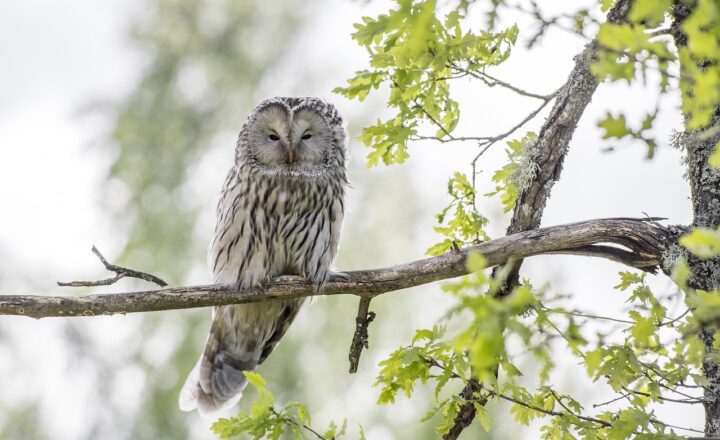Wildlife Wonders: Fascinating Facts About Animals You Didn’t Know
November 19, 2024

The natural world is filled with endless wonders, and the animal kingdom presents a treasure trove of bizarre and fascinating facts. From the staggering speed of a cheetah to the remarkable intelligence of certain bird species, wildlife is full of surprises that many people are unaware of. This article explores some of the most extraordinary facts about animals that will leave you in awe of the natural world.
1. The Cheetah: Nature’s Speedster
Known as the fastest land animal, the cheetah can reach speeds of up to 75 miles per hour (120 km/h) in short bursts covering distances up to 500 meters. However, their incredible speed comes at a cost; they can only maintain this pace for about 20 to 30 seconds. Their lightweight bodies and flexible spines allow them to accelerate quickly and make sharp turns, an adaptation that is crucial for hunting in their natural habitats.
An interesting fact is that a cheetah’s acceleration is faster than that of a sports car, making it a true marvel of nature.
2. Octopuses: The Masters of Camouflage
Octopuses possess the astonishing ability to change their color and texture almost instantaneously. This remarkable skill allows them to blend seamlessly into their surroundings to evade predators or sneak up on prey. They achieve this through specialized skin cells called chromatophores, which contain pigments and can expand or contract quickly.
In addition to camouflage, octopuses are known for their intelligence. They can solve puzzles, navigate mazes, and even exhibit playful behaviors, making them one of the smartest invertebrates.
3. The Heart of a Blue Whale
The blue whale is not only the largest animal on Earth but also has the largest heart, weighing approximately 400 pounds (around 180 kg). This massive organ pumps blood through the whale’s enormous body, reaching lengths of up to 100 feet (30 meters) and weighing as much as 200 tons.
Despite their colossal size, blue whales primarily feed on tiny shrimp-like animals called krill. During feeding season, they can consume up to 4 tons of krill a day, showcasing their incredible dietary requirements.
4. Honey Bees: The Dance of Communication
Honey bees communicate with one another through a complex system of dances known as the “waggle dance.” When a forager bee returns to the hive, it performs a series of movements to inform its fellow bees about the location of food sources. The direction and duration of the dance convey the distance and direction of the flowers, enabling other bees to find them.
This form of communication showcases the social structure and collaborative nature of bee colonies, emphasizing their role as essential pollinators in our ecosystem.
5. Elephants: The Emotional Giants
Elephants are known for their astounding intelligence, strong social structures, and emotional depth. They exhibit behavior that suggests empathy, such as comforting fellow elephants who are grieving or in distress.
Notably, elephants circulate grief by visiting the remains of deceased herd members and demonstrating individual mourning rituals, reflecting their strong familial bonds. Their intelligence is evident in their ability to use tools, cooperate in social interactions, and exhibit self-awareness.
6. Axolotls: The Regeneration Wonders
The axolotl, also known as the Mexican walking fish, has become famous for its incredible regenerative abilities. Unlike most animals that heal scars, axolotls can regenerate entire limbs, spinal cords, and even parts of their heart and brain without scarring. Scientists are fascinated by their regenerative properties and study them to better understand tissue regeneration in humans.
The axolotl has become a symbol of conservation efforts, as they are critically endangered due to habitat loss and pollution in their native environment.
7. The Migration of Monarch Butterflies
Every year, millions of monarch butterflies undertake a remarkable migration covering thousands of miles from North America to central Mexico. Monarchs are the only butterflies known to migrate in such large numbers, undertaking this journey mainly to escape cold winters.
During this migration, individual butterflies travel between 1,200 to 2,800 miles, navigating using environmental cues like the position of the sun and the Earth’s magnetic field. Their ability to return to the same wintering sites year after year is a captivating mystery in the animal kingdom.
8. Tardigrades: The Resilient Micro-Animals
Tardigrades, also known as water bears, are microscopic creatures renowned for their extreme resilience. They can survive extreme temperatures from -272°C to +150°C and can even endure the vacuum of space. When faced with adverse conditions, tardigrades can enter a state of cryptobiosis, drastically slowing their metabolism and allowing them to survive until their environment becomes favorable again.
Their ability to withstand harsh conditions makes them a subject of scientific interest in studies related to astrobiology and potential life beyond Earth.
Conclusion
The animal kingdom is a treasure trove of remarkable capabilities and surprising behaviors that provoke wonder and curiosity. From the astonishing speed of cheetahs to the unique communication methods of honey bees, each species contributes to the rich tapestry of life on Earth. Learning about these incredible facts can deepen our appreciation for wildlife and inspire us to protect the diverse ecosystems that sustain these remarkable creatures.
Whether you are an animal lover, a budding naturalist, or simply curious about the wonders of the world around you, taking the time to discover more about these fascinating animals can lead to a greater understanding of our planet’s biodiversity and myriad of life forms it hosts.








